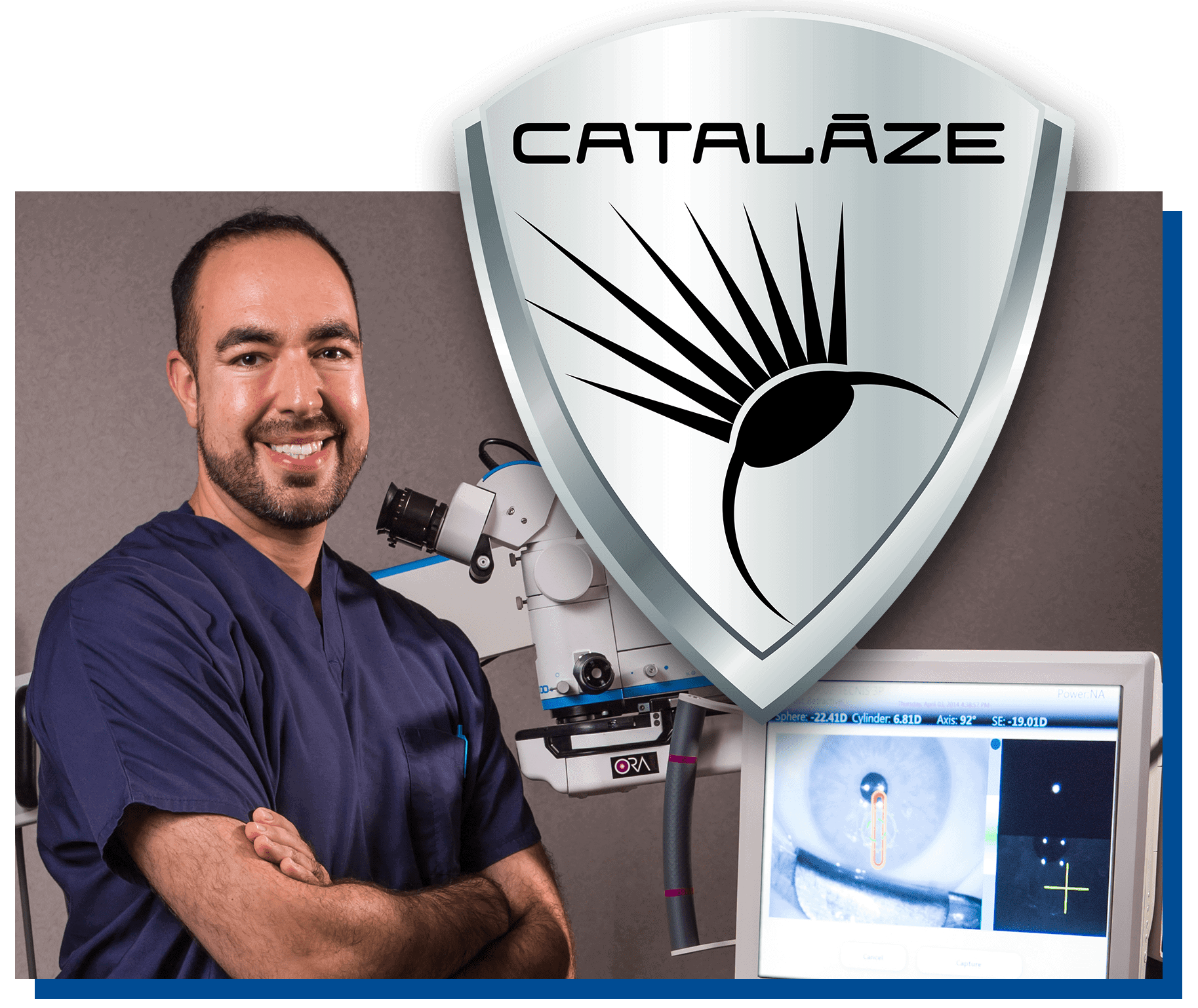fix your eyes
on what matters most
Cataracts Diagnosis in Melbourne & Brevard County, FL
Cataracts are the most common cause of blindness worldwide. But with current technology, being diagnosed with cataracts isn’t a sentence to permanent poor vision. If you suspect you may have cataracts begin your journey to clearer vision by learning about your treatment options
Cataract Symptoms
If you have cataracts, you may see signs of the following:






START SEEING CLEARER
Treatment Options
Restore your vision & restore your life with the most modern cataract surgery options available today.




FEATURED TREATMENT OPTION
CataLaze™ Cataract Surgery
This option consists of a lens placement in the effected eyes using a laser. Use of laser technology helps to break up the cataract faster than alternative methods. The procedure also comes with the benefit of a faster recovery. Fend off vision problems with CataLaze™.
FAQ
-
Who is at risk of developing cataracts?
Age is the most common risk factor associated with cataracts. Other risk factors to consider include:
- Smoking
- Certain diseases
- Taking certain medications
- Extended unprotected exposure to UV rays
-
How can I prevent cataracts from worsening?
If you practice a healthy lifestyle and maintain a clean diet, you can limit your chances of cataracts worsening. You can also avoid cataract progression by cutting out medications that increase risk or cataracts. This includes eye drops, specifically regular usage of steroid eye drops.
As a final protective measure, avoid extended exposure to UV light without protecting your eyes. Wear sunglasses, even on cloudy days, to cut back on cataract progression.
-
What happens if cataracts are left untreated?
Cataracts, left untreated, can grow to become ‘hyper-mature’. These hyper-mature cataracts are more difficult to remove and can result in surgical complications. If you wait too long to have cataracts removed your cataracts can cause total blindness.
-
When should I have my cataracts removed?
You can do without surgery if your cataracts do not interfere with your everyday life. However, if your cataracts are causing blurred vision, glare while driving, or disabling you from completing tasks or enjoying hobbies then it is time to begin considering removal. Other signs it’s time to consider surgery are experiencing double vision, difficulty seeing in spaces that aren’t well lit, and being unable to read.
-
Are there different types of cataracts?
You can develop three types of cataracts, potentially all three, over time as your eyes age.
Nuclear sclerotic cataracts are most comment and cause yellowing and hardening of the eye. Cortical cataracts result in cloudy areas on the lens. The final type, posterior subcapsular cataracts, form at the back of the lens.
